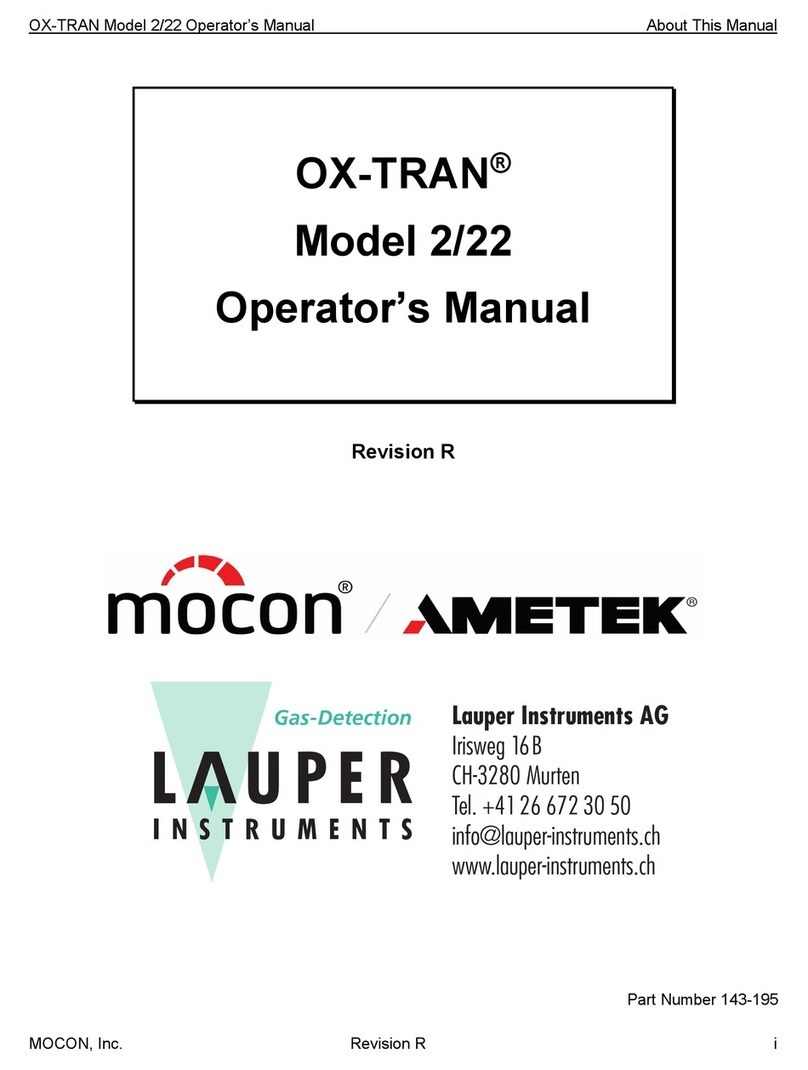
Package test system LIPPKE 2000 SL Introduction
Paul Lippke Handels-GmbH 10
2.2 General operating instructions
After switching on (power switch on the rear panel, see figure 3.3, page 16), the LIPPKE 2000 SL
control unit first displays the parameter last used (see figure 2.7).
Figure 2.7: Control unit, front panel
The two red LEDs on the left side of the display field indicate the active mode: The BURST
TEST LED indicates a burst test and the PRESSURE LOSS TEST LED indicates a pressure loss
test. Depending on the four LEDS on the right side, the digital display has different meanings:
“mbar”: The current pressure is displayed in ”mbar”, if this LED lights up, otherwise in
”PSI”
“∆P” signalises pressure loss in ”mbar” or ”PSI” (see above)
With ”SEC”, test time is indicated in seconds and with
”MIN” in minutes.
The LED bar display below the numerical display field has the following meaning:
Burst test: The current internal pressure inside the package is displayed in the overall
range of 0 - 3000 mbar on the ”ACTUAL PRESSURE” display. Thus one
LED corresponds to 300 mbar.
Pressure loss test: The selected test pressure is displayed on the ”SET PRESSURE” display.
All 10 LEDS always light up. The current internal pressure of the package
is displayed on the ”ACTUAL PRESSURE” display. One LED is
extinguished for each pressure loss of 10%.
Setting of mode and pressure is performed in the left part of the operator panel. The ”TEST
MODE” key serves for changing to the desired mode. The function is activated by pressing the
”+”- or ”-” key, i.e. a pressure value or a pressure rise rate is displayed on the display. Then the
pressure can be set by means of the ”+”- and ”-” key. The values are changing the faster the
longer the key is pressed. In test system configuration (see chapter 6), you can determine whether
the factory-set default pressure unit ”mbar” shall be changed into the pressure unit ”PSI”.




























